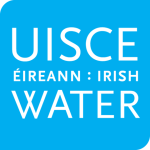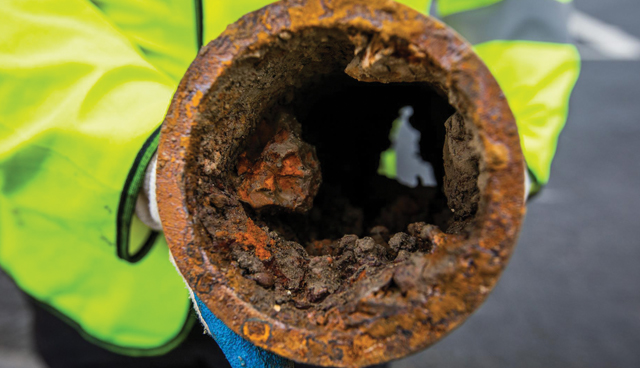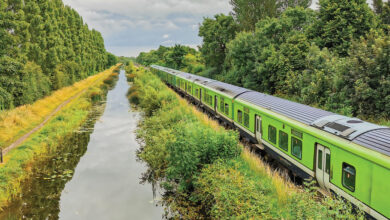A draft framework plan to manage drinking water supplies for next 25 years

Ireland is not a water stressed country. Two days of rainfall provides enough water to meet public water demand for an entire year. However, the rainfall that replenishes rivers, lakes and ground water sources, is unevenly distributed across the country and across the year, with most of it falling in the least densely populated areas.
Rain everywhere but not a drop to drink
Our national public water infrastructure has suffered from decades of inconsistent investment. A fragmented service delivery model meant that under resourced local authorities had to maintain services to customers without the ability to plan long-term improvements or investments. The resulting challenge now faced by Irish Water is that it does not have sufficient raw water available or the appropriate infrastructure to match the demand for treated public drinking water throughout the year.
Water sources are stretched by a growing population, a changing climate and an environment under increasing pressure. The disruption to public water supplies from severe weather and droughts in recent years and the demand from economic growth have further highlighted the lack of resilience in public water infrastructure and the urgent need to have a clear strategy for securing and sustaining it for the future.
We have to future proof our systems
Irish Water has recently completed work on Phase 1 of its first National Water Resources Plan which sets out how Irish Water will manage long term demands to ensure availability of safe, sustainable and reliable treated public drinking water supplies.
This Plan, which arises from needs identified in the 25 year Water Services Strategic Plan, is firmly grounded in national and EU policy and legislation outlined in the Water Services Policy Statement, Project Ireland 2040, the National Planning Framework, the Water Framework and Drinking Water Directives and the River Basin Management Plan for Ireland.
The plan aims to achieve a balance between the water that is available and the treated water that is needed over the next 25 years. Like Ireland’s water supply network, the National Water Resource Plan, is not limited by county or city boundaries and it will aim to provide a consistent level of service, reliability, quality and sustainability to every customer regardless of where they live in the country.
The Draft Framework National Water Resources Plan, due to be published shortly for public consultation, sets out the information and methodology Irish Water will use to identify deficiencies and need across the water supply system and potential solutions to address them through capital investment, demand management and improved operation of existing assets.
The plan will identify:
• The water quantity that Irish Water can provide;
• The water quality that Irish Water can provide; and
• The performance and operational efficiency of Irish Water’s asset base.
A three-pillar approach
The approach to solving supply-demand balance challenges for public drinking water supply comes under three pillars: lose less, use less and supply smarter.
1. Lose less: This pillar focuses on reducing water lost through leakage and improving the efficiency of Irish Water’s distribution networks. It includes the actions that improve the understanding of leakage and how to reduce it, and the tools required to help find and fix leaks.
2. Use less: This pillar focuses on water conservation and activities to help understand water use habits, to encourage behavioural change and to promote water efficient devices and appliances for customers at home and at work.
3. Supply smarter: This pillar focuses on improving the quality, resilience and security of public water supplies through infrastructure and operational improvements and developing new sustainable sources of water.
Public consultation and engagement are key
Extensive engagement has been undertaken by Irish Water with a broad range of stakeholders to bring the National Water Resources Plan to this stage. The draft framework plan will now be published for full public consultation in two stages, both of which will be subject to Strategic Environmental Assessment and Appropriate Assessment.
Phase 1 is the National Water Resources Plan Framework which will include the methodology Irish Water will use to develop the plan, including how it will assess quantity, quality, and reliability and how it will address sustainability. It will also include its options assessment and preferred approach development processes and an assessment of needs for all public water supplies. It will be accompanied by an illustrative case study to show how the methodology is applied to a study area.
Consultation on Phase 1, starting in 2020 will last for eight weeks and all submissions and observations will be taken into consideration in finalising the NWRP Framework.
Phase 2 is made up of 4 Regional Water Resource Plans that will apply the NWRP Framework Methodology to the water supplies within that region and develop Plan level Preferred Approaches for the supplies in these areas. Each regional plan will be subject to Strategic Environmental Assessment and Appropriate Assessment.
|
A key focus on leakage reduction
Leakage reduction is a challenge for every water utility. It is a long-term commitment not a short-term intervention and it is central to Irish Water’s approach to achieving supply demand balance for drinking water supply. Irish Water has developed the first national long-term dedicated leakage reduction plan that combines mains replacement, pressure management, valve and meter replacement, targeted leak repairs and data improvements to achieve maximum water savings. Current Leakage rates are 42 per cent nationally and 37 per cent in the Greater Dublin Area. Between 2014-2020 (Q2) Irish Water saved 441 mega litres per day (MLD) in gross water savings. 76MLD has been achieved in Dublin in the last 3 years. This progress needs continued focus to be sustained. Like on every water network, new leaks happen every day. Drought and severe weather negatively impact leakage savings by causing further bursts on weak pipes due to pressure changes. Successful and efficient reductions in leakage are often achieved through unseen work like pressure management, valve replacement and data improvements. The long-term target is to reduce leakage below 20 per cent and this is being supported with a strong funding commitment from government that must be maintained. €400 million has been invested since 2016 and a further €500 million will be invested in the next five years. Additional capital funding provided in the Governments Covid-19 stimulus package will target further priority leakage reduction work across the country. |
Phases 1 and 2 combined will make up the overall National Water Resources Plan which will be reviewed on a cyclical basis.
The right plan for the future
The National Water Resources Plan will highlight the big challenges that exist for public water supplies across the country. More importantly however it will also identify preferred approaches that can be supported by public policy and future investment. Without a long-term plan to address these serious problems, there will be a substantial shortfall between the amount of water available and the amount Ireland needs to safely sustain economic growth. Proactive steps must be taken now to ensure there is enough water for future generations.

W: www.water.ie
Twitter: @irishwater
Facebook: Irish Water Uisce Éireann
LinkedIn: Irish Water






